Here are some of the plants you will find in bloom this month at the Elizabeth Lawrence House & Garden.
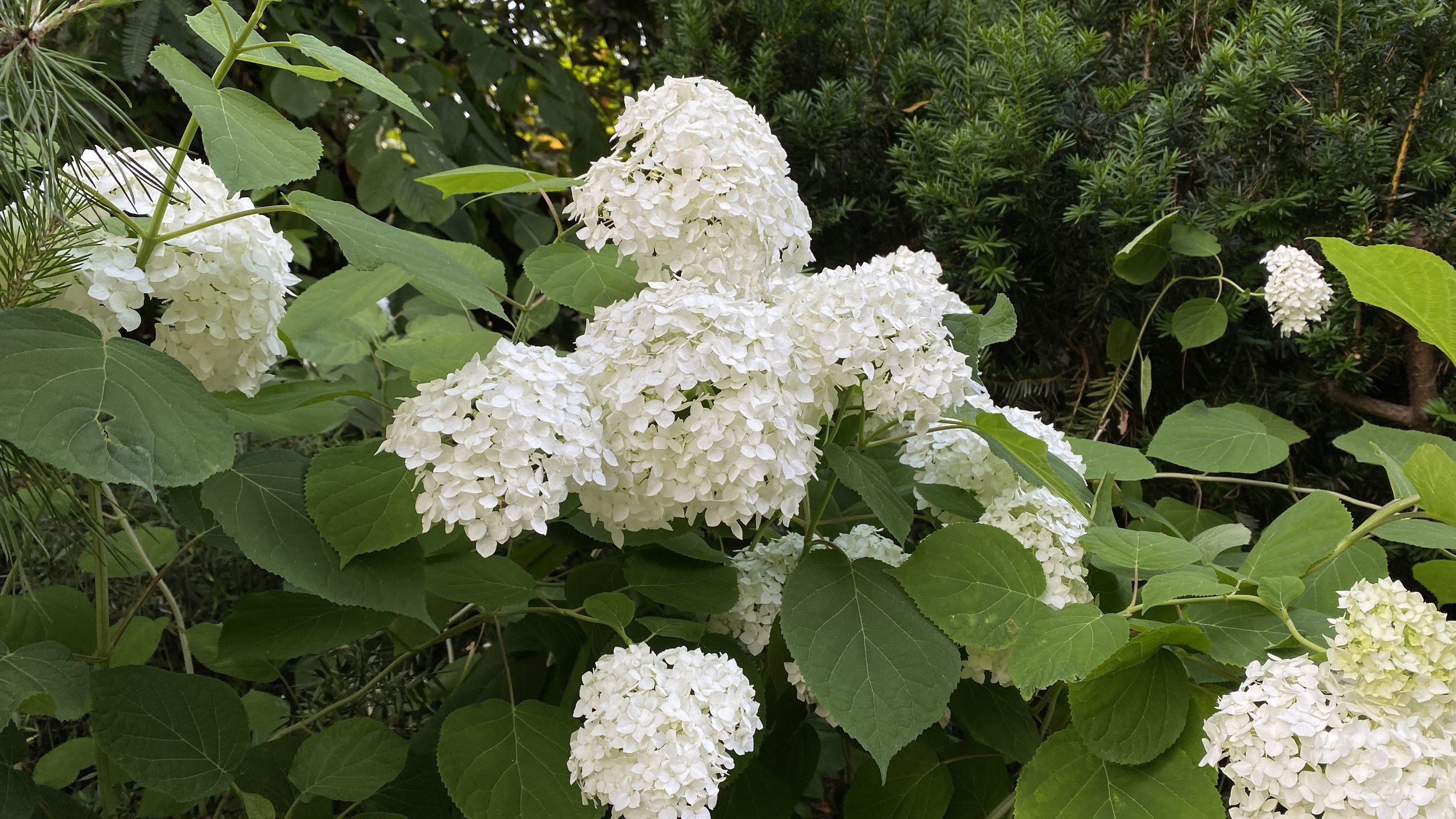
…but rather the type, Hydrangea arborescens var. grandiflora. I prefer this to ‘Annabelle’ because its flowers do not flop nearly as much.
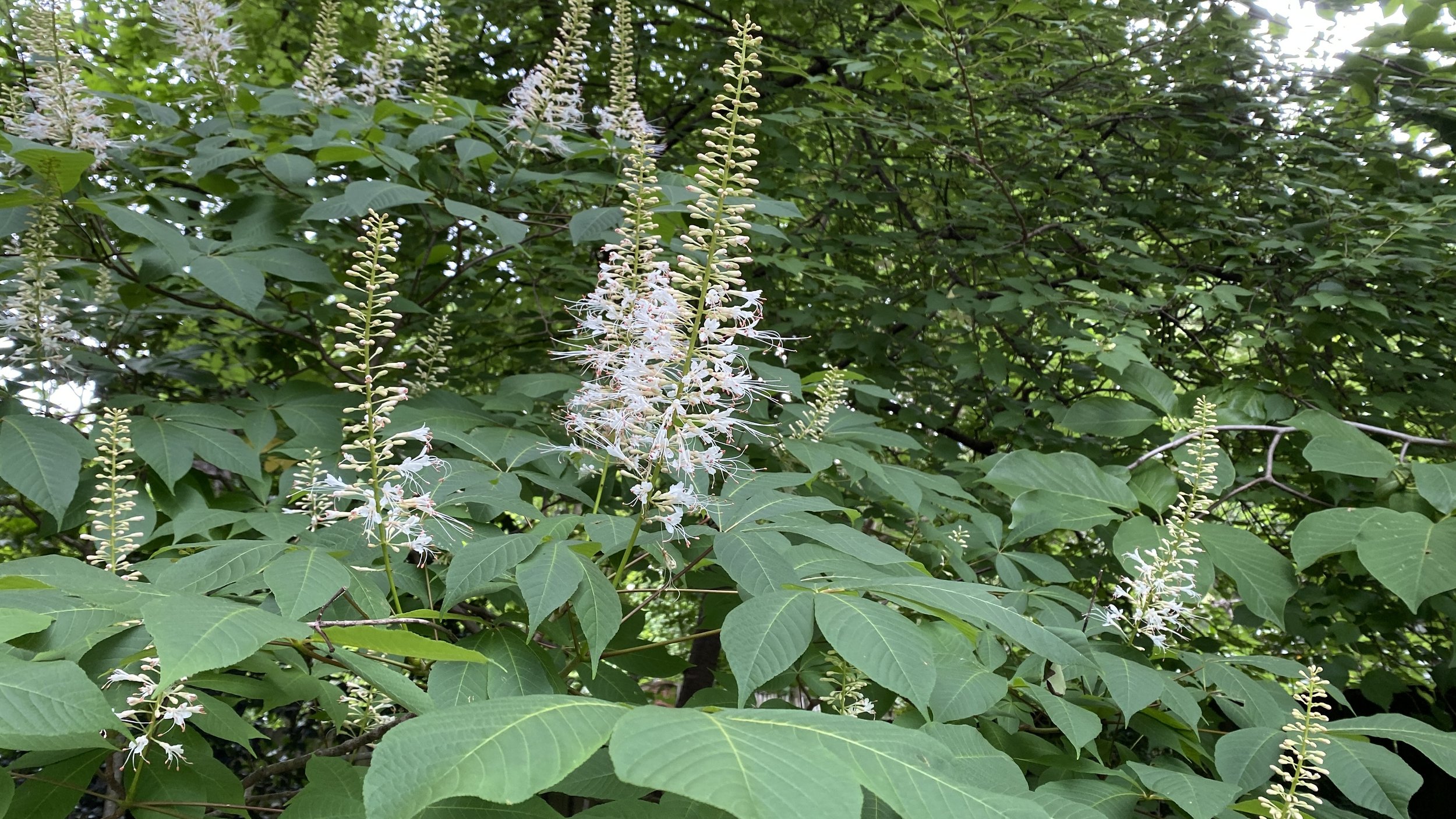
This Aesculus parviflora has been here since 1950. It blooms every year, right about the second week of June.
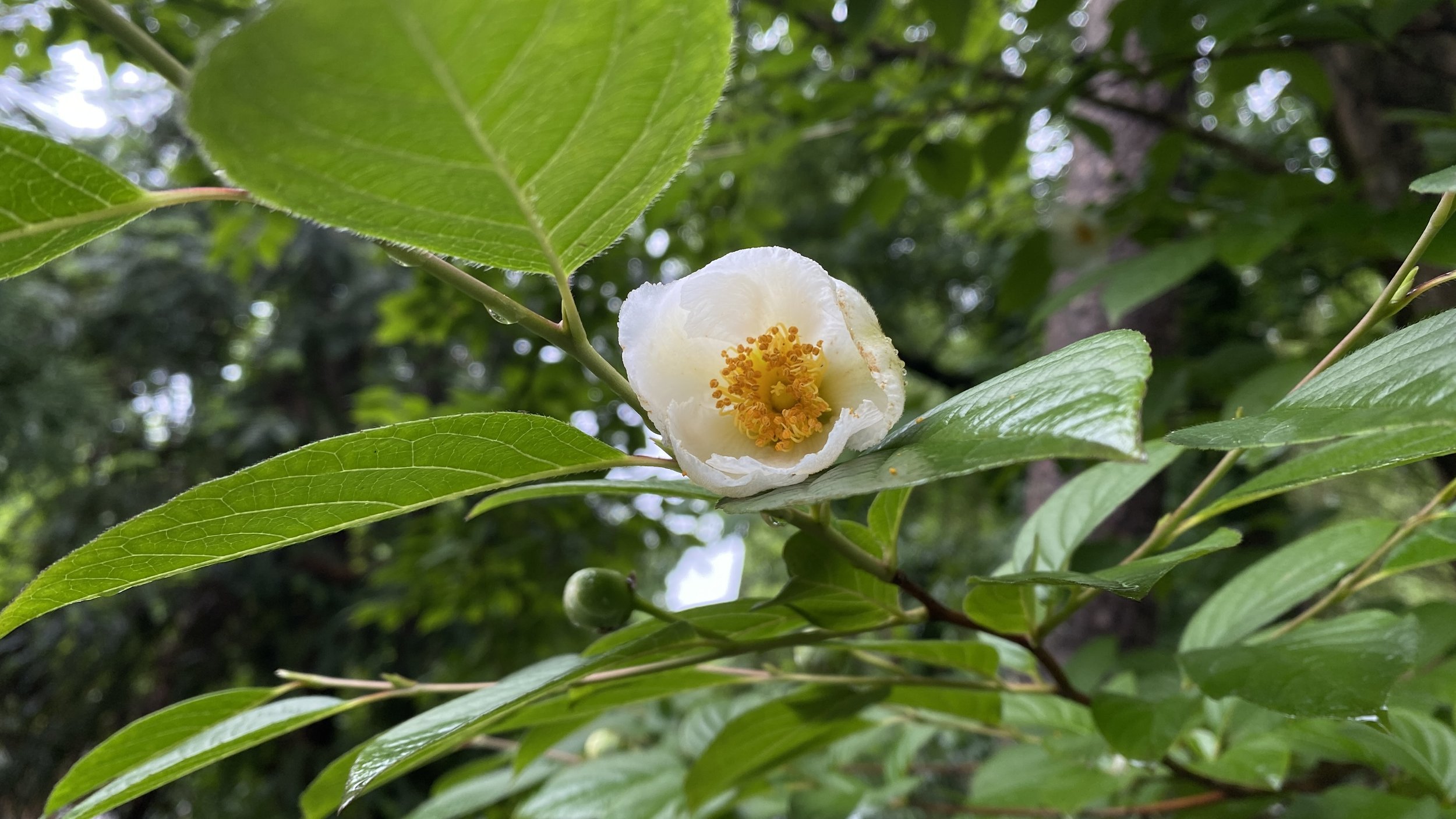
You can usually find Elizabeth’s Stewartia pseudocamellia var. koreana in bloom the first week in June.
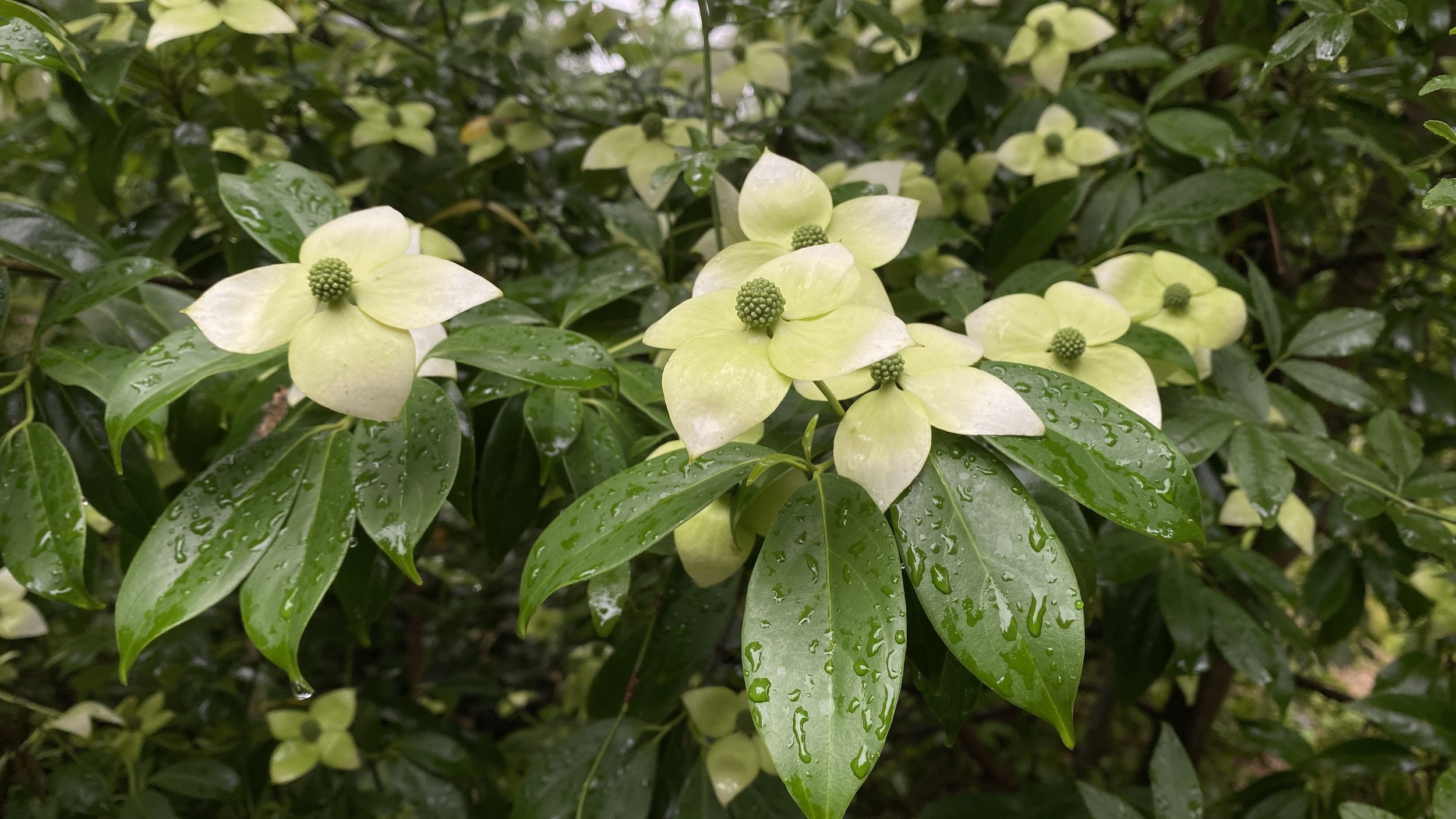
A newer addition to the garden, Cornus angustata ‘Elsbry’ will be in bloom the entire month of June.
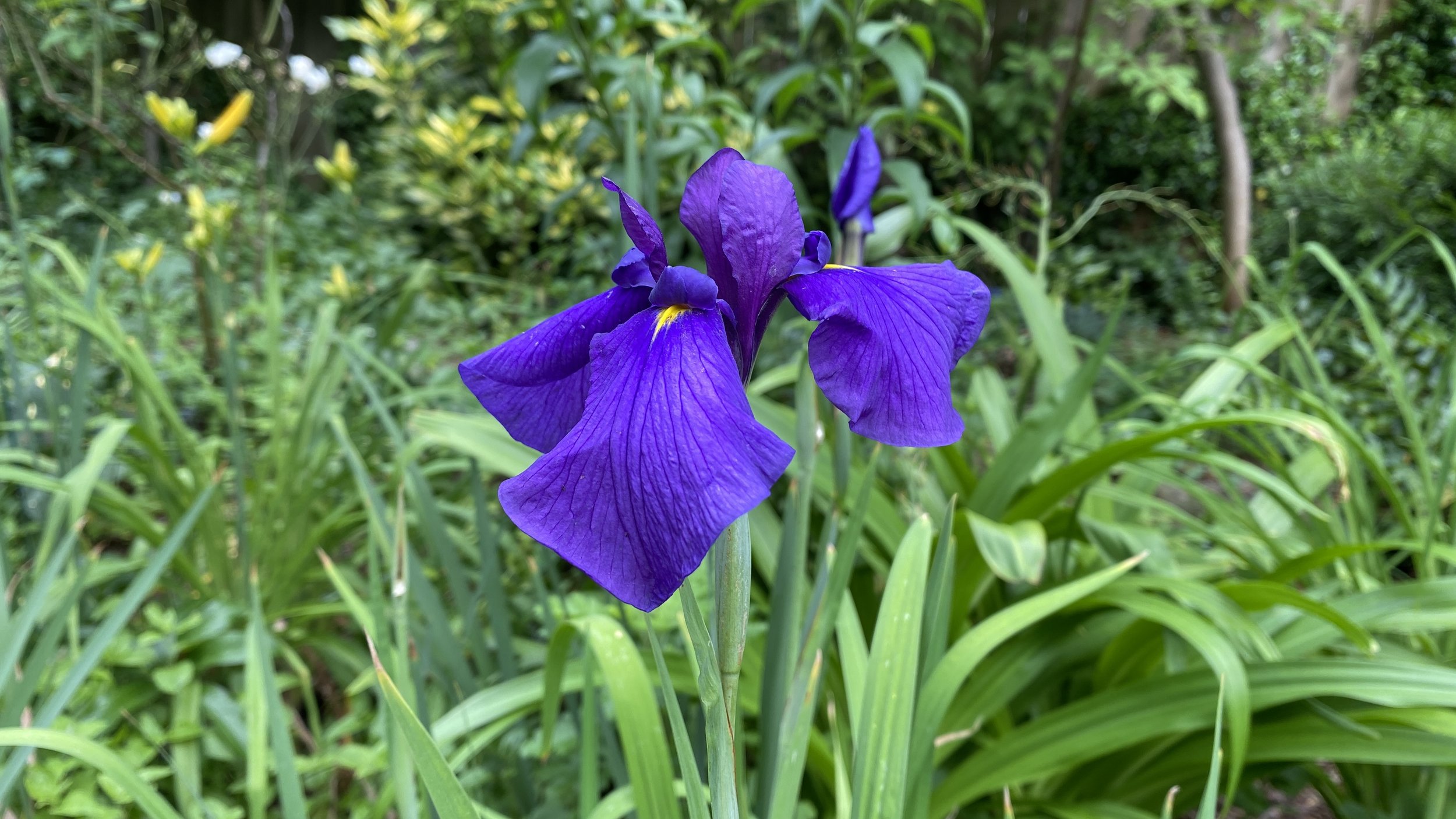
There are only a couple of Japanese iris in the garden. This one, Iris ensata ‘Loyalty’, is a newer addition.
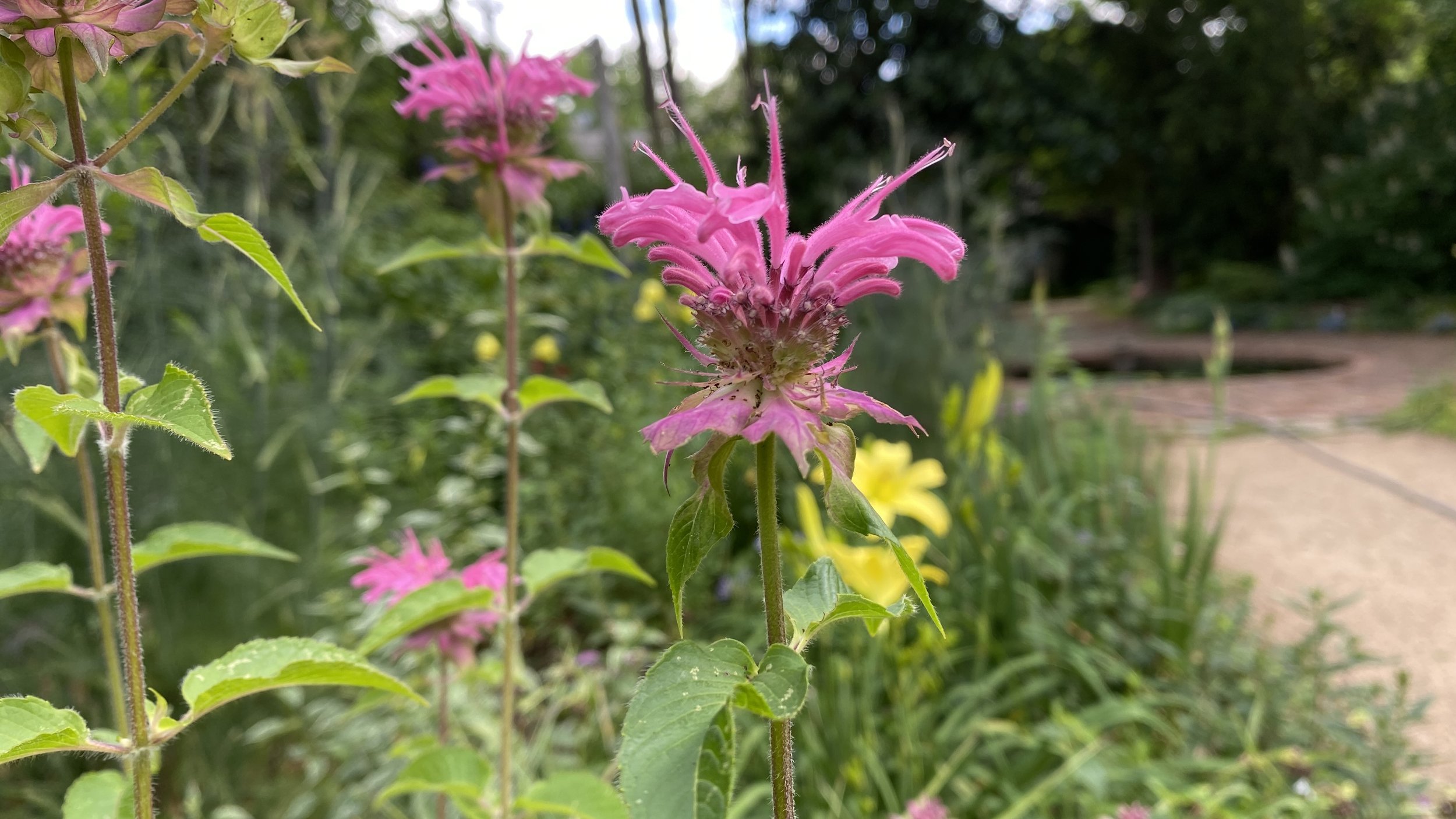
This lovely beebalm is one of the best I’ve ever grown. It is Monarda fistulosa ‘Claire Grace’.
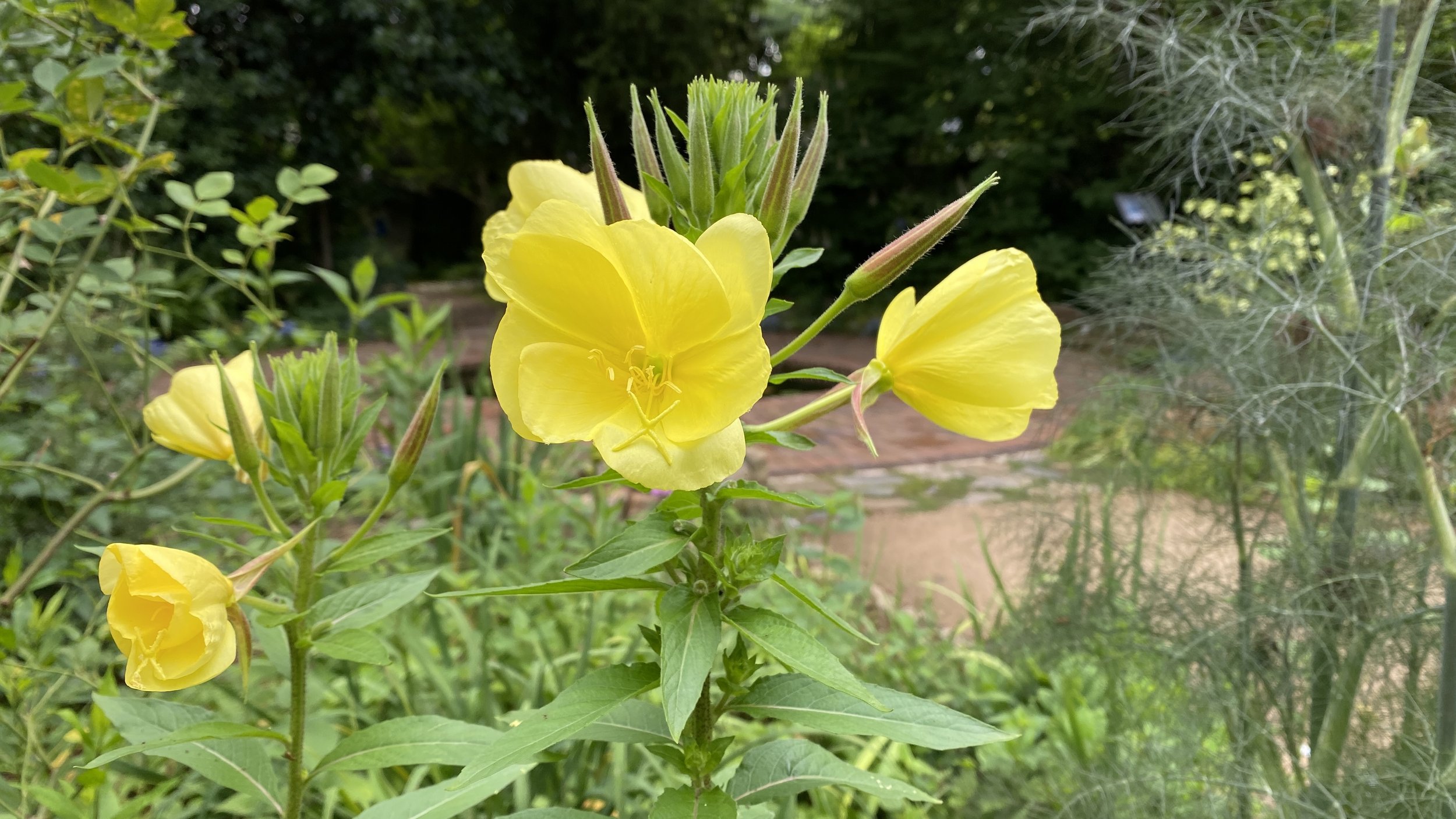
Seedlings of Oenothera biennis come up where they will—always in the right spots in the sunny borders.
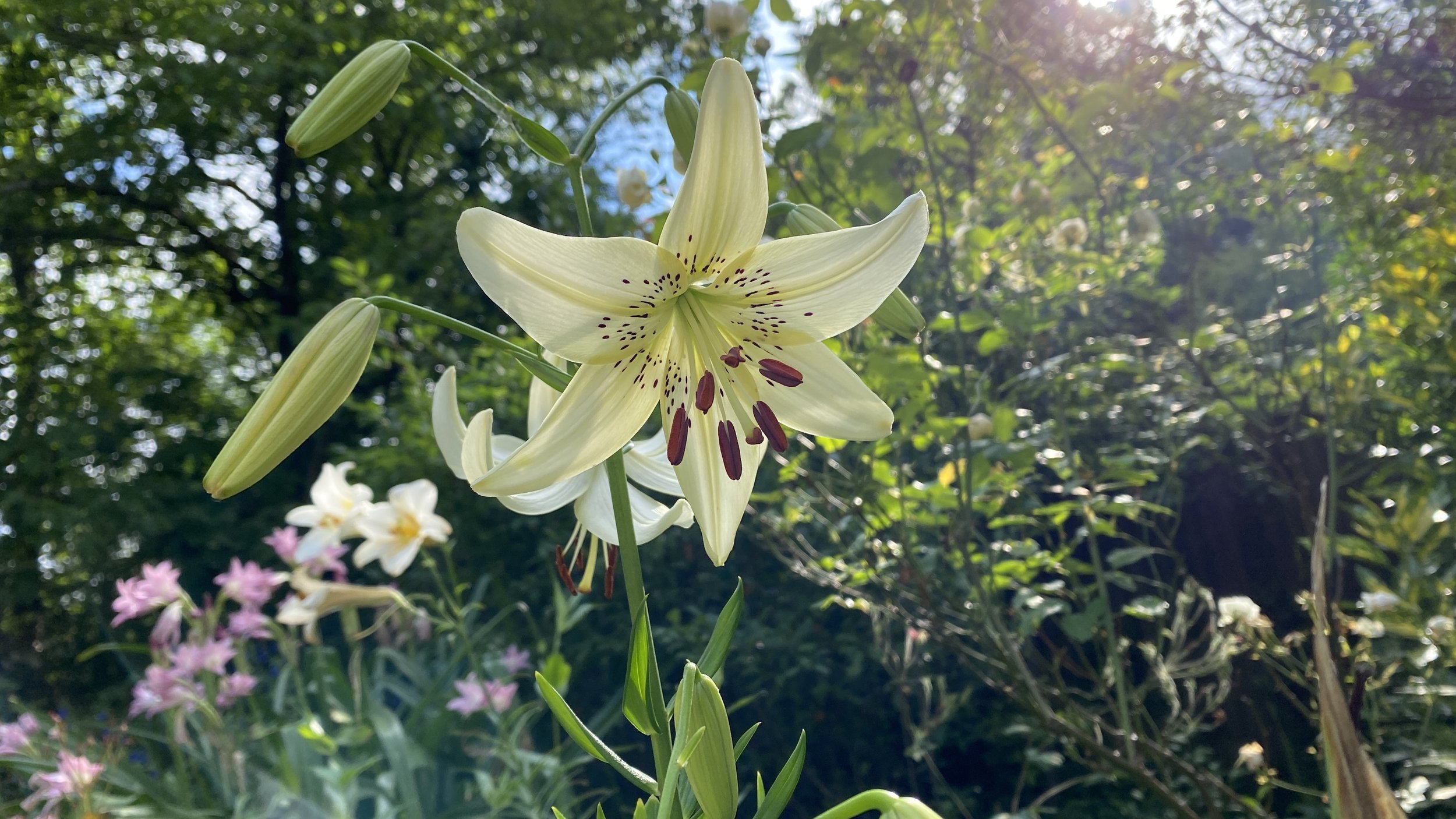
Lilium ‘White Tiger’ is among the earliest lilies in the garden.
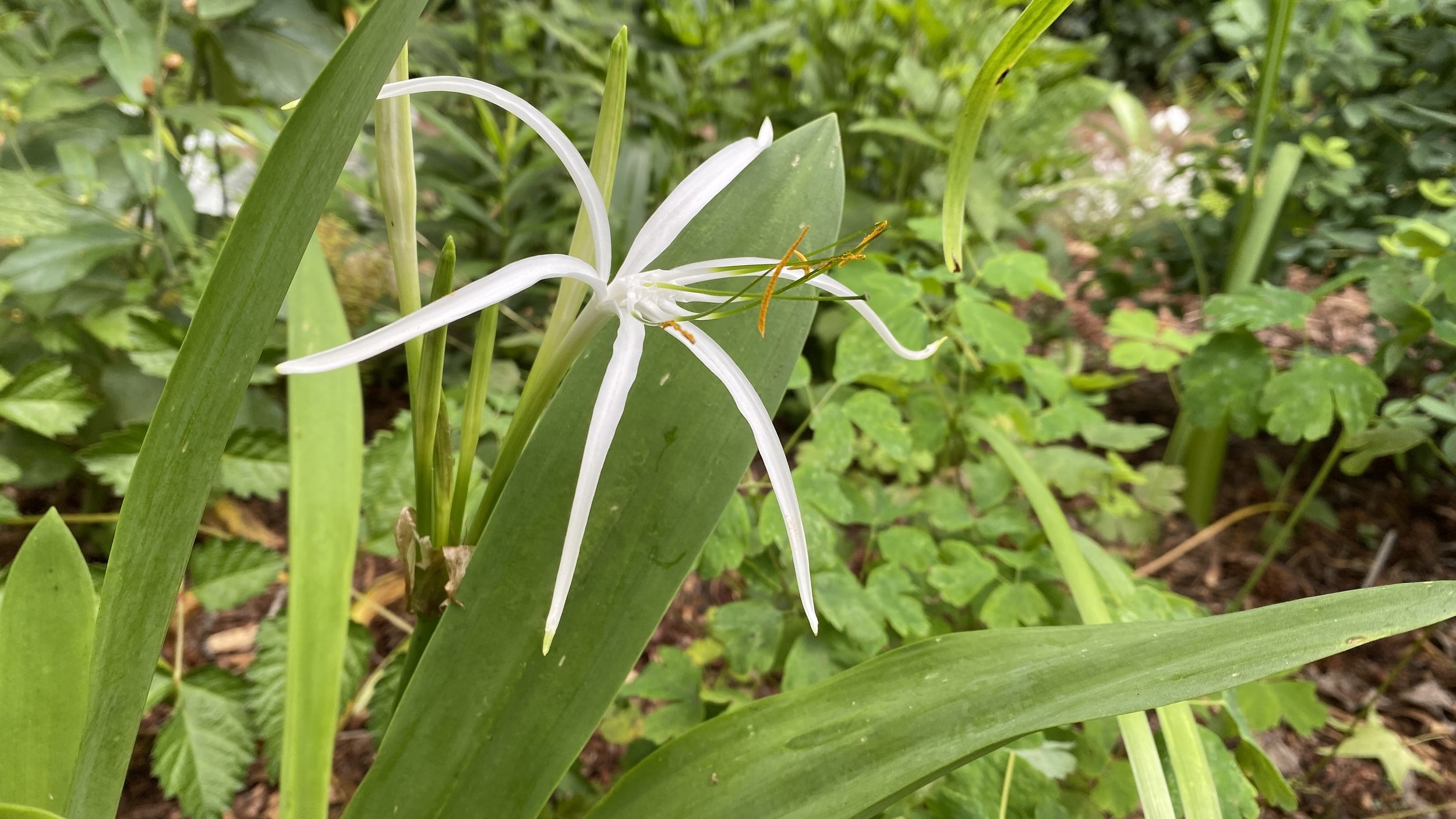
The blooms of Hymenocallis harrisiana are fascinatingly … well… spidery.
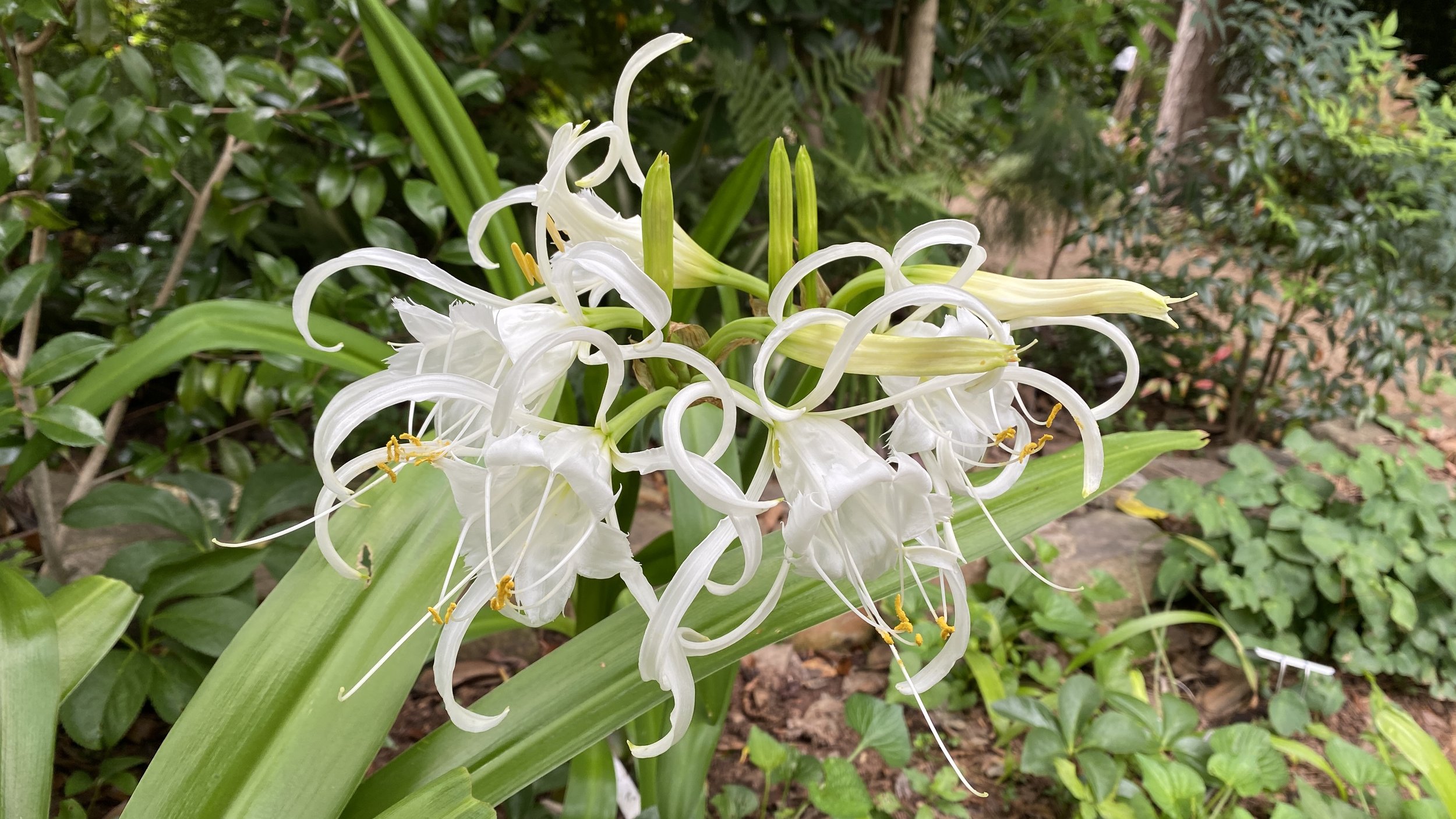
Ismene (syn. Hymenocallis) festalis ‘Zwanenberg’ is another interesting early summer bulb with large, fragrant flowers. It is also sometimes called Peruvian daffodil.
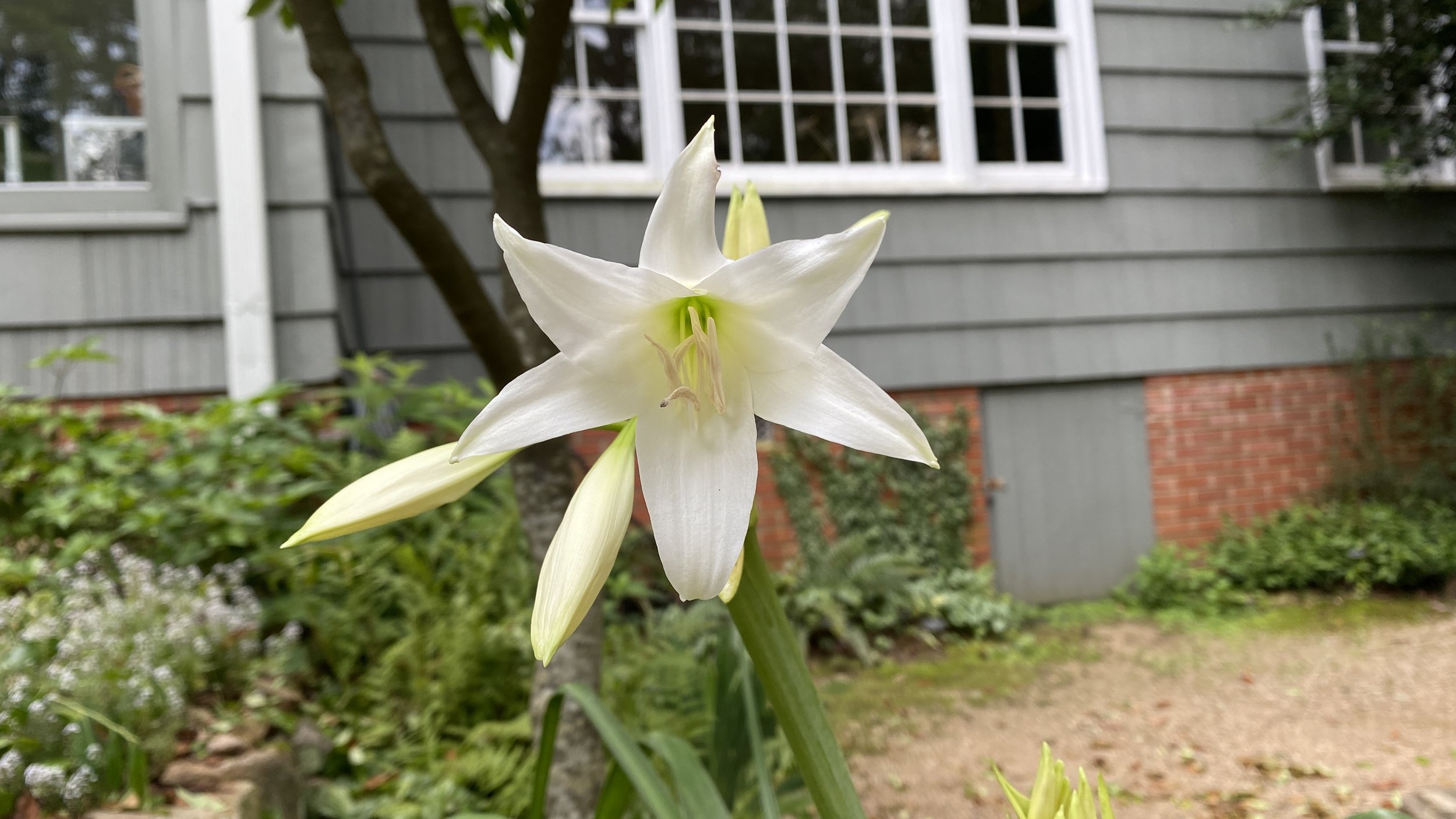
Elizabeth’s original Crinum ‘White Queen’ blooms even in the shade of a cherry laurel.
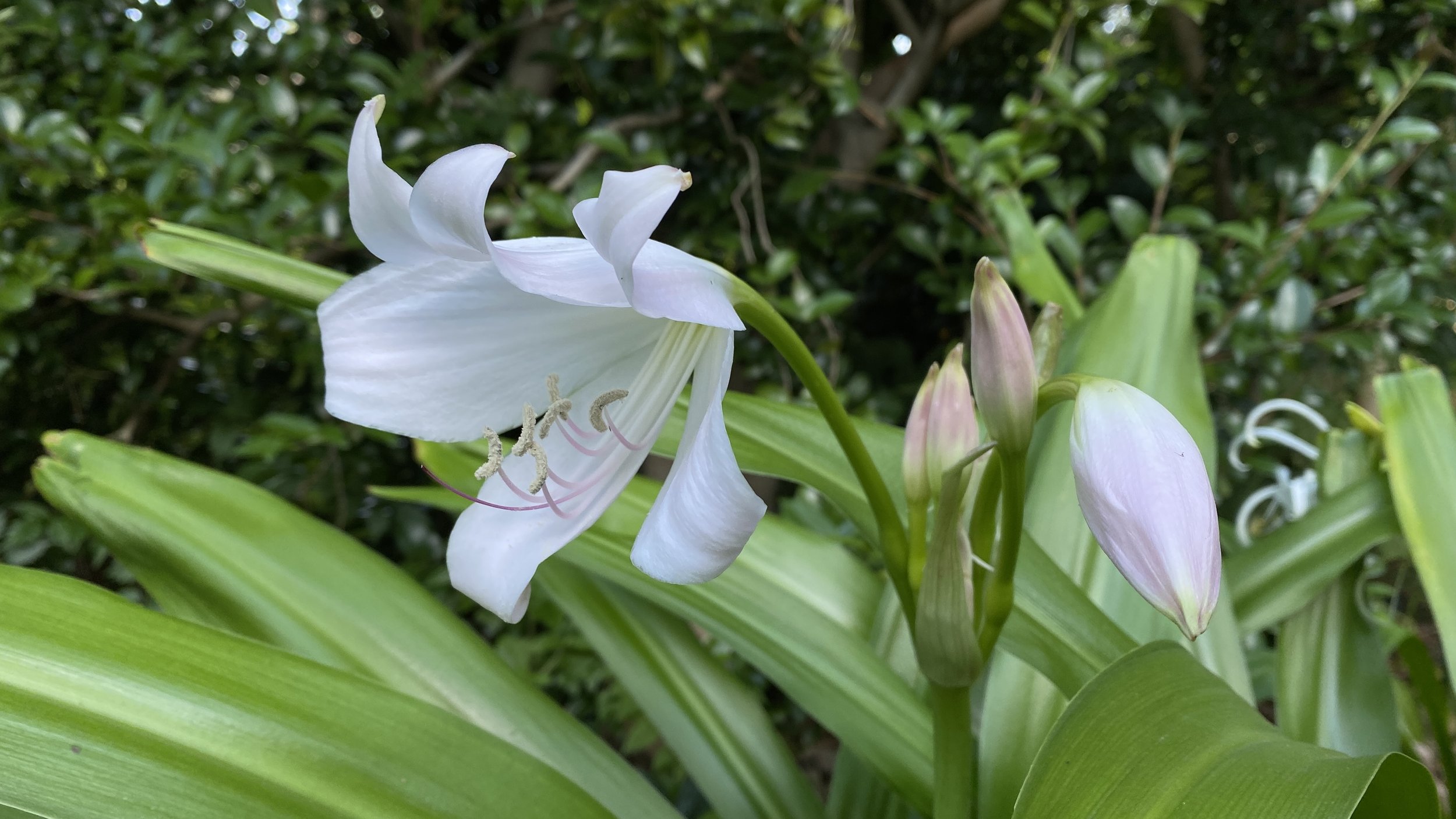
Elizabeth’s original Crinum moorei var. schmidtii is one that prefers a little shade.
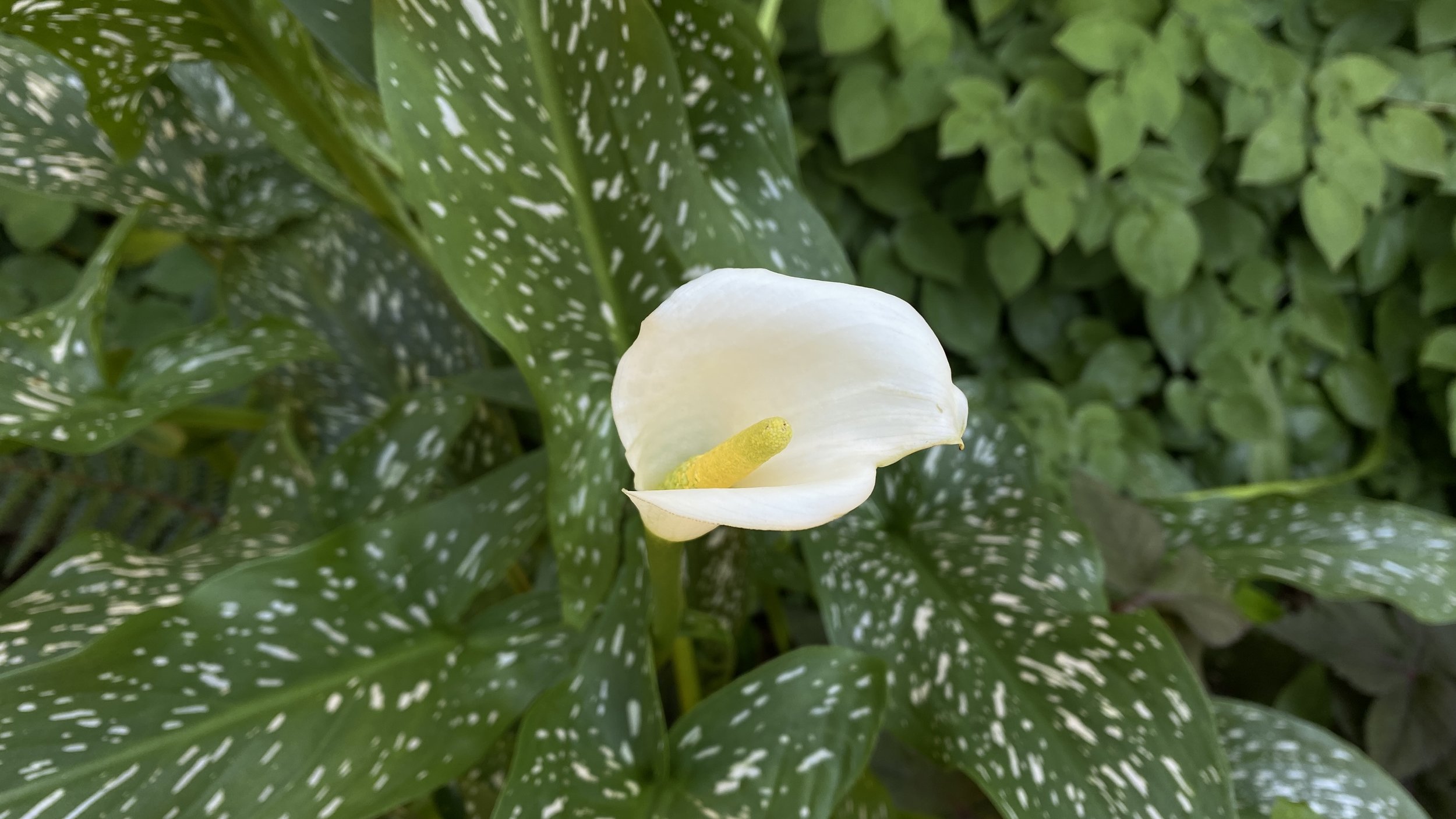
Zantedeschia albomaculata blooms just behind the house, near the enclosed terrace.
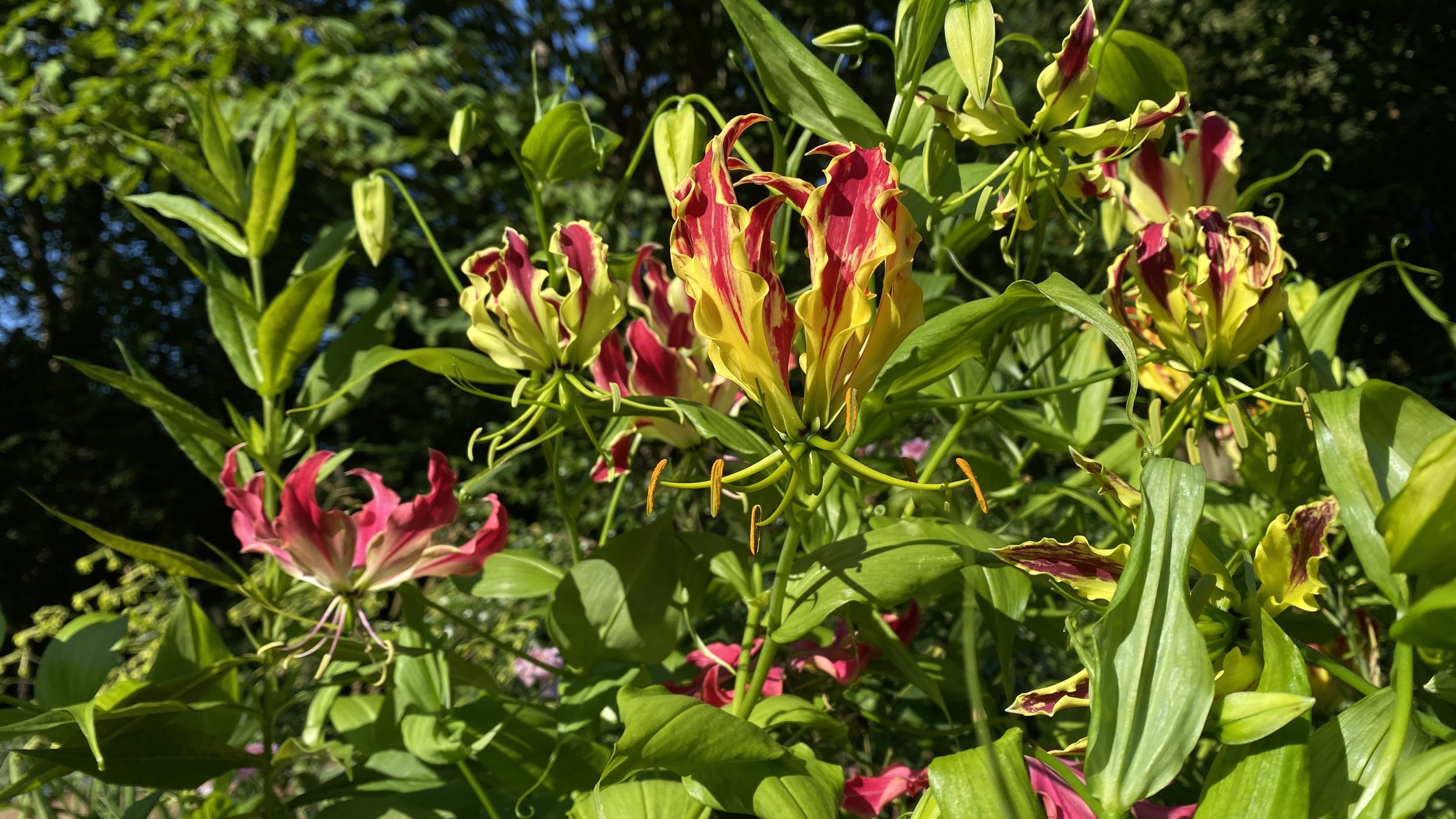
Here’s a weird, wacky and wonderful plant: Gloriosa superba ‘Rothschildiana’.
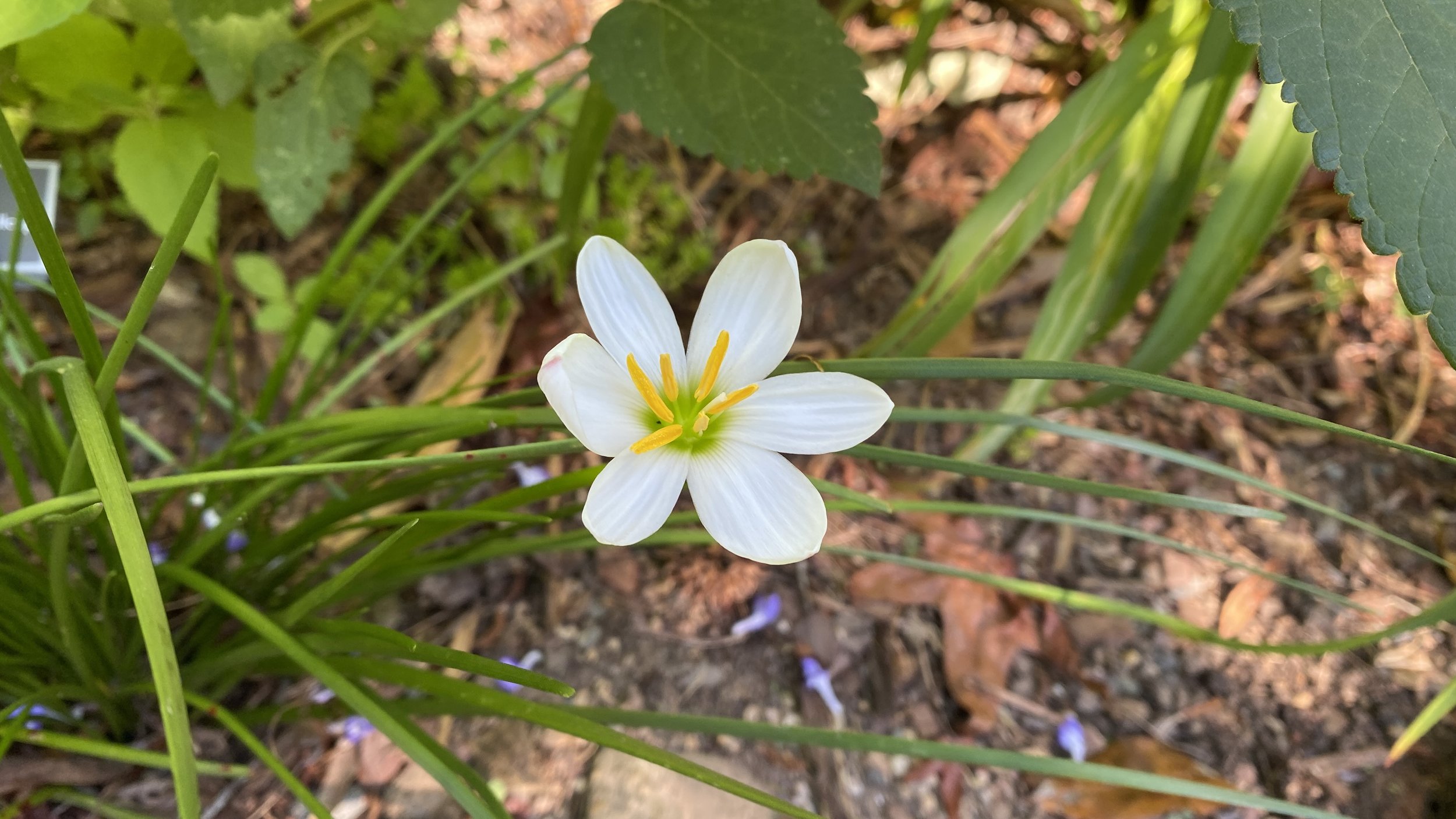
The first blooms of Elizabeth’s Zephyranthes candida are seen this month.
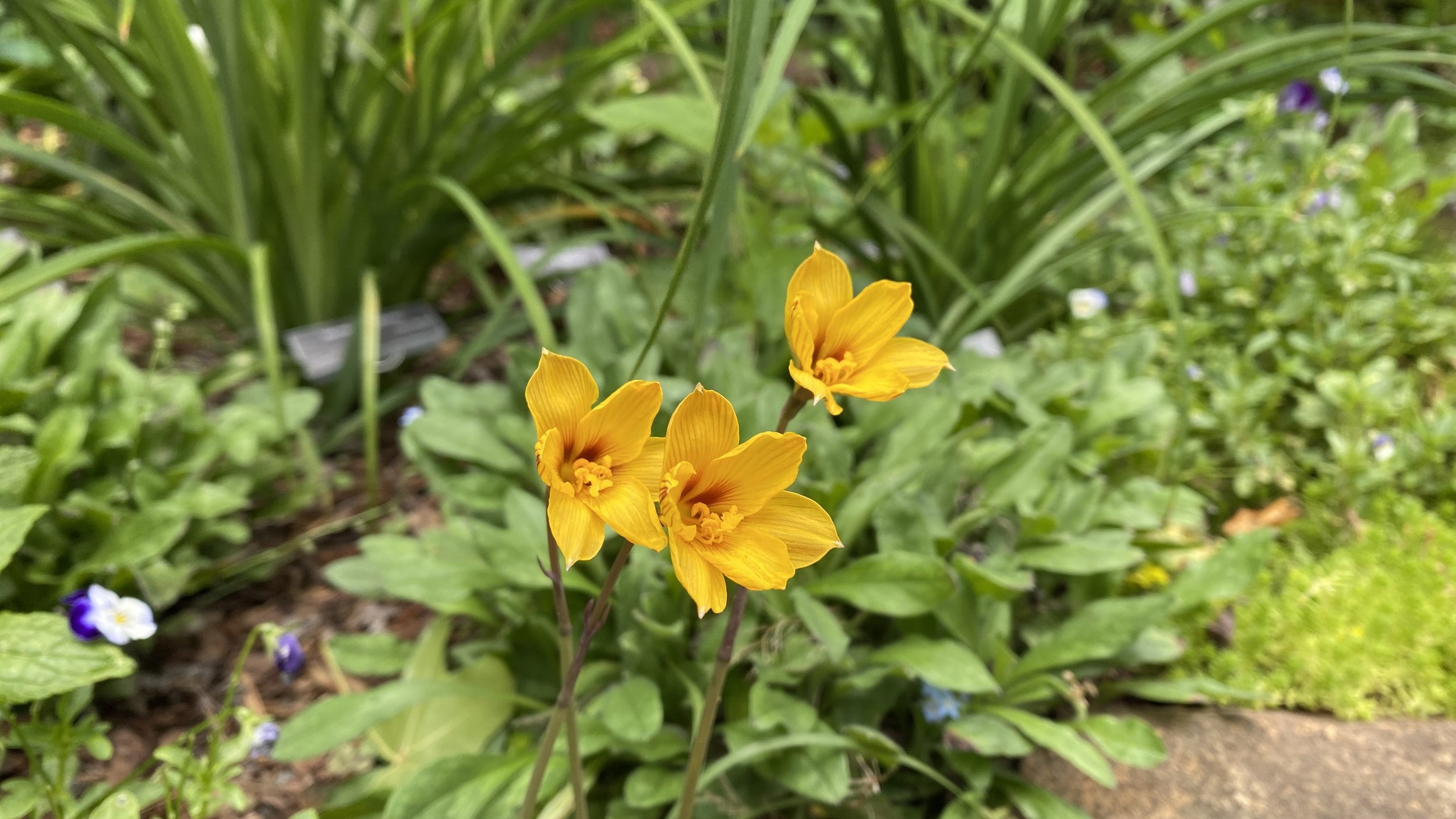
A fairly new addition to the garden, Habranthus tubispathis var. texensis glows in the lowest border.
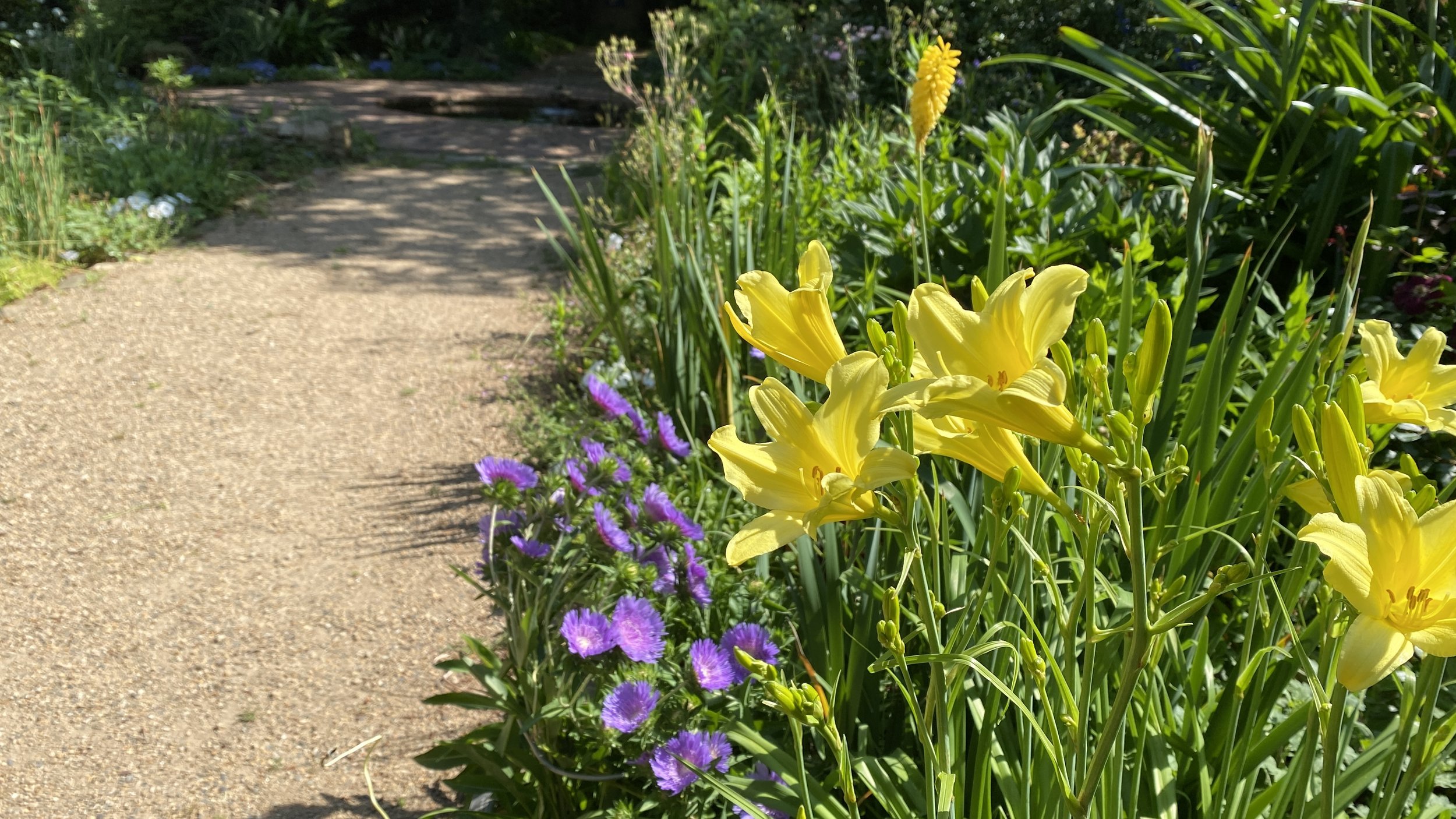
June is the height of daylily season in Elizabeth Lawrence’s garden. Most of the daylilies in the garden today are original. One of my favorites is this pale yellow one—Hemerocallis ‘Modesty’.
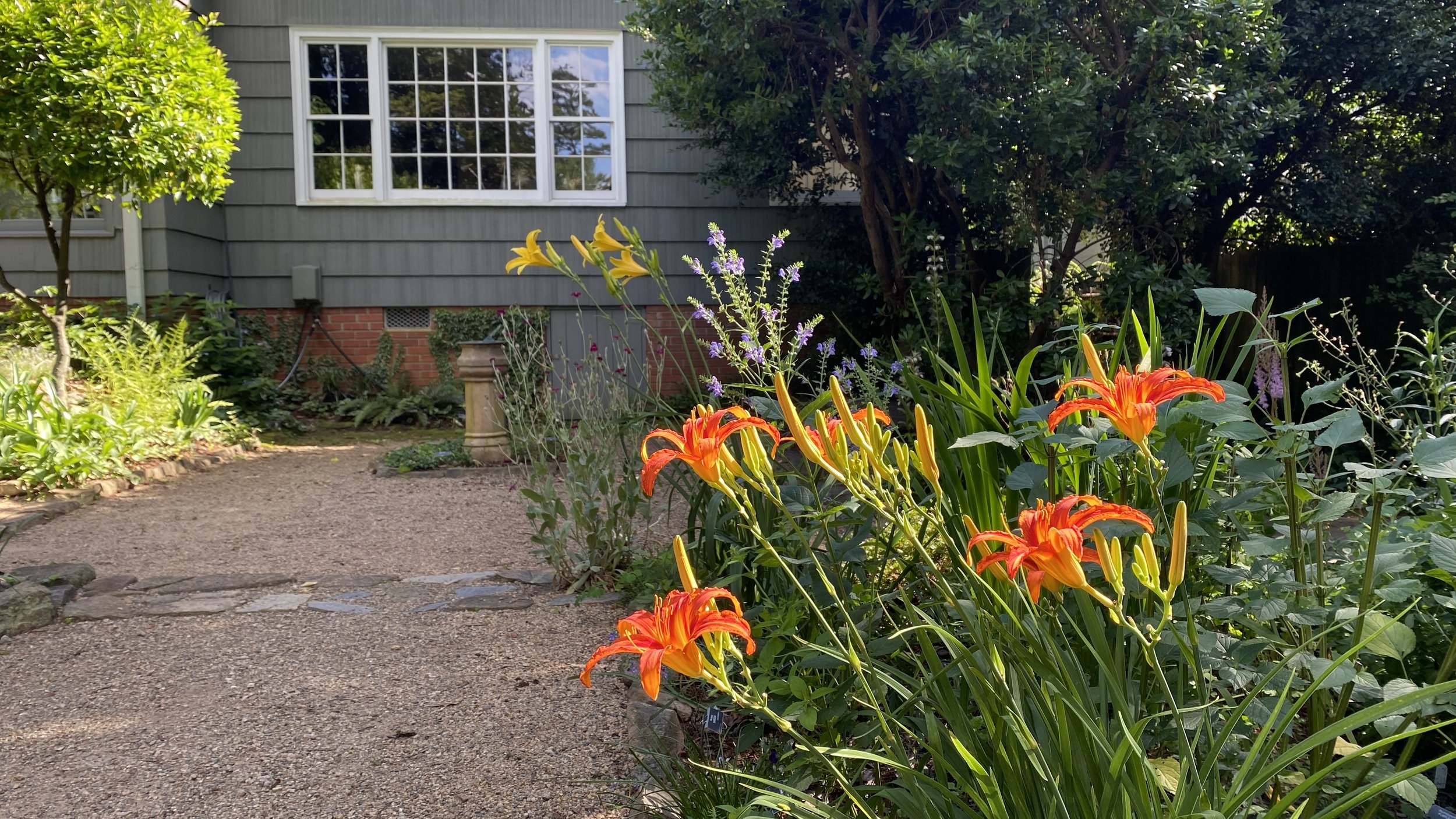
At the edge of the lower path is another of Elizabeth’s daylilies—a brilliant clear red. I’m still working toward discovering its true identity.
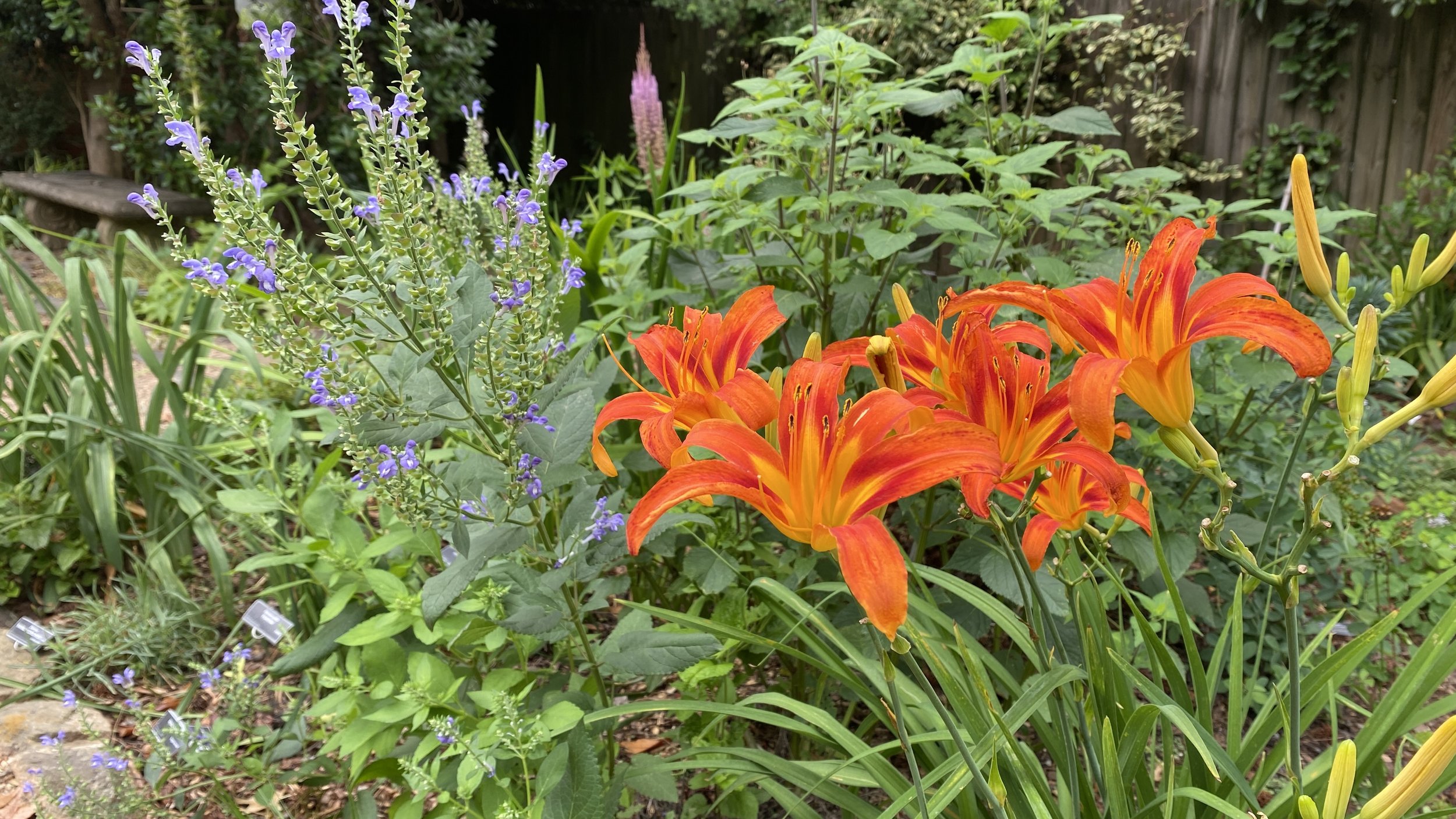
Here’s the same as-of-yet unknown red hot daylily on the lower path. I love it planted with the cool blue of the Scutellaria incana, or skullcap.
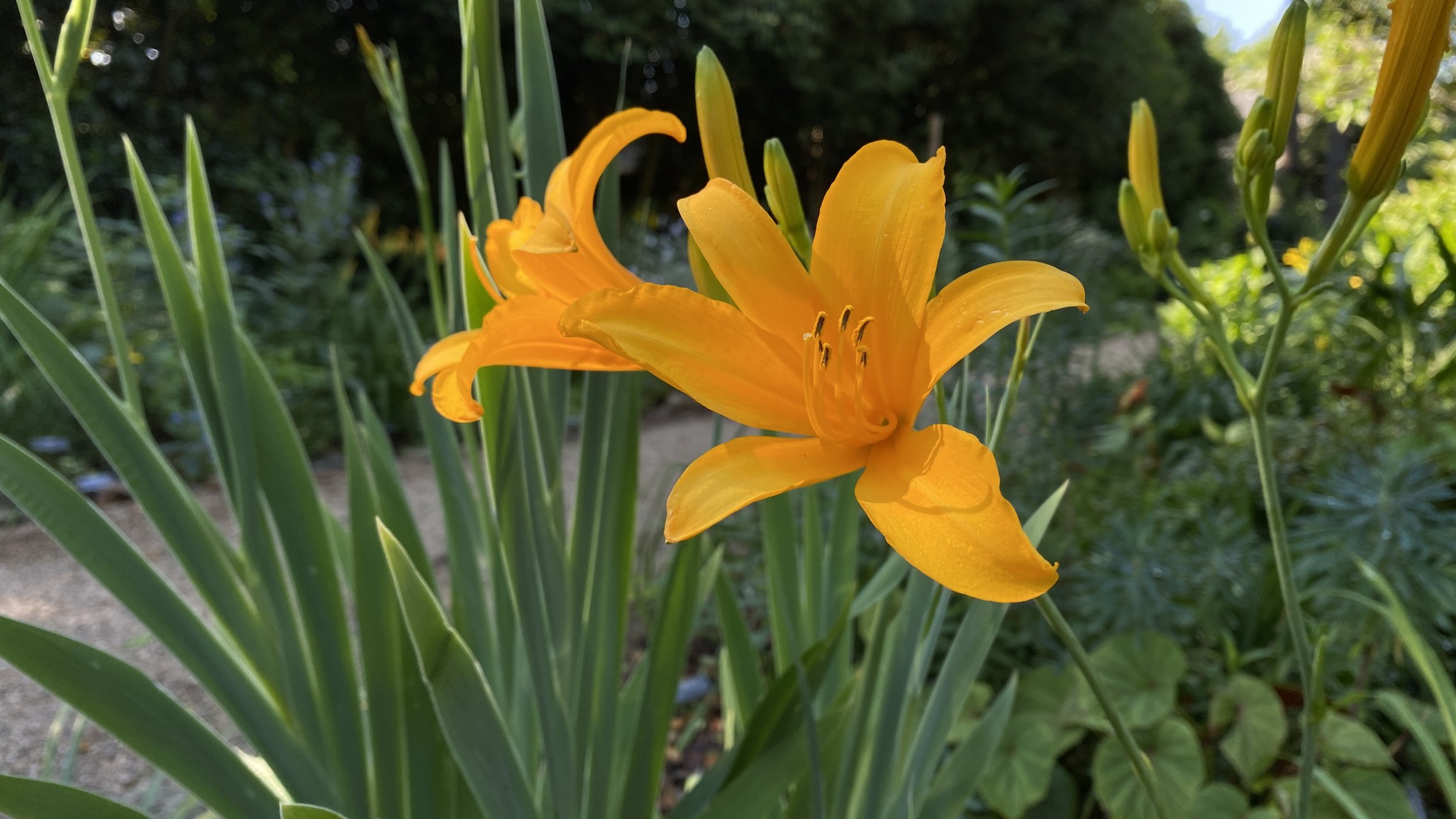
Hemerocallis ‘Goldeni’ is one about which Elizabeth wrote several times.
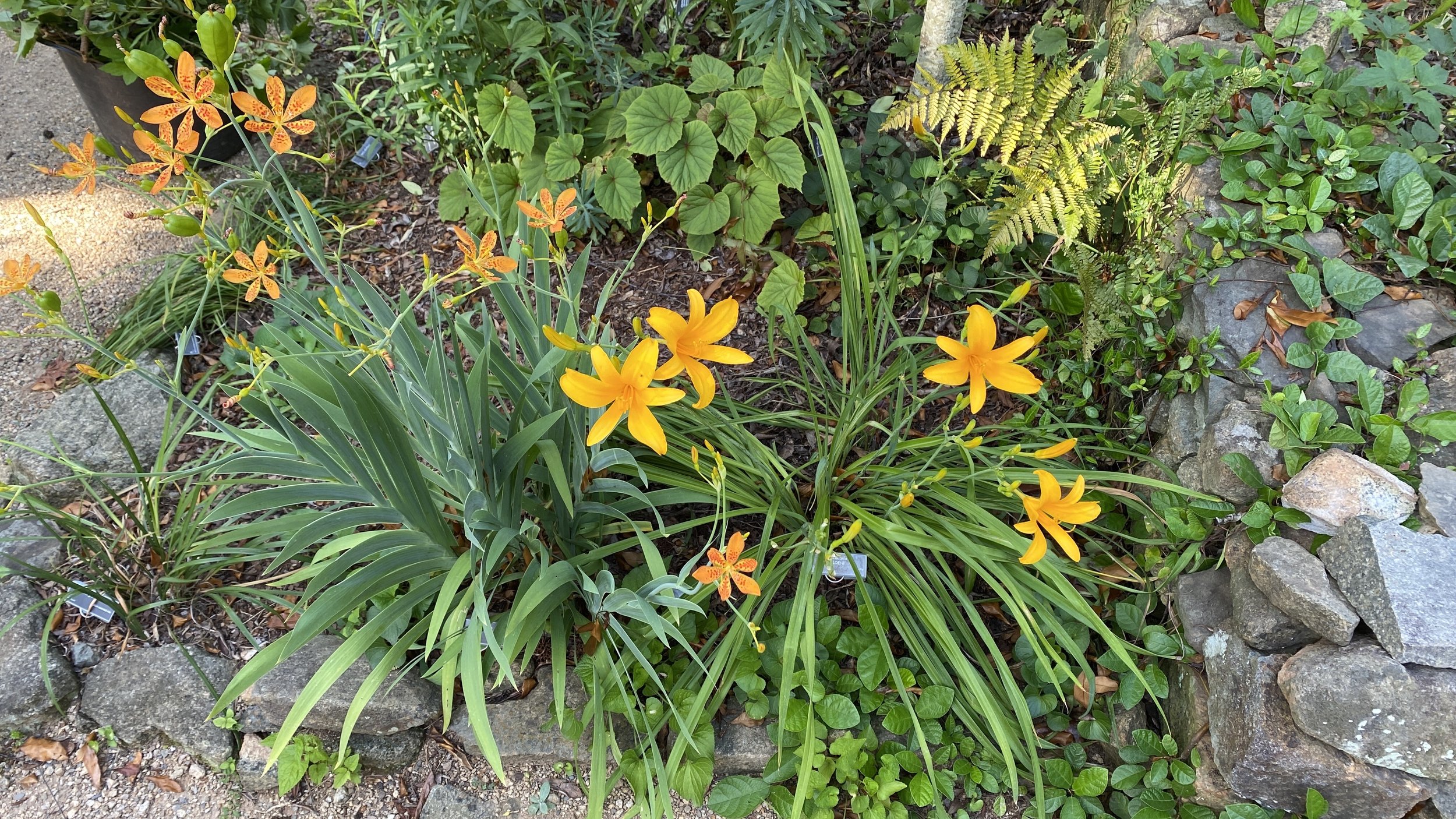
Here’s Hemerocallis ‘Goldeni’, echoing the color of Iris domestica, the blackberry lily.
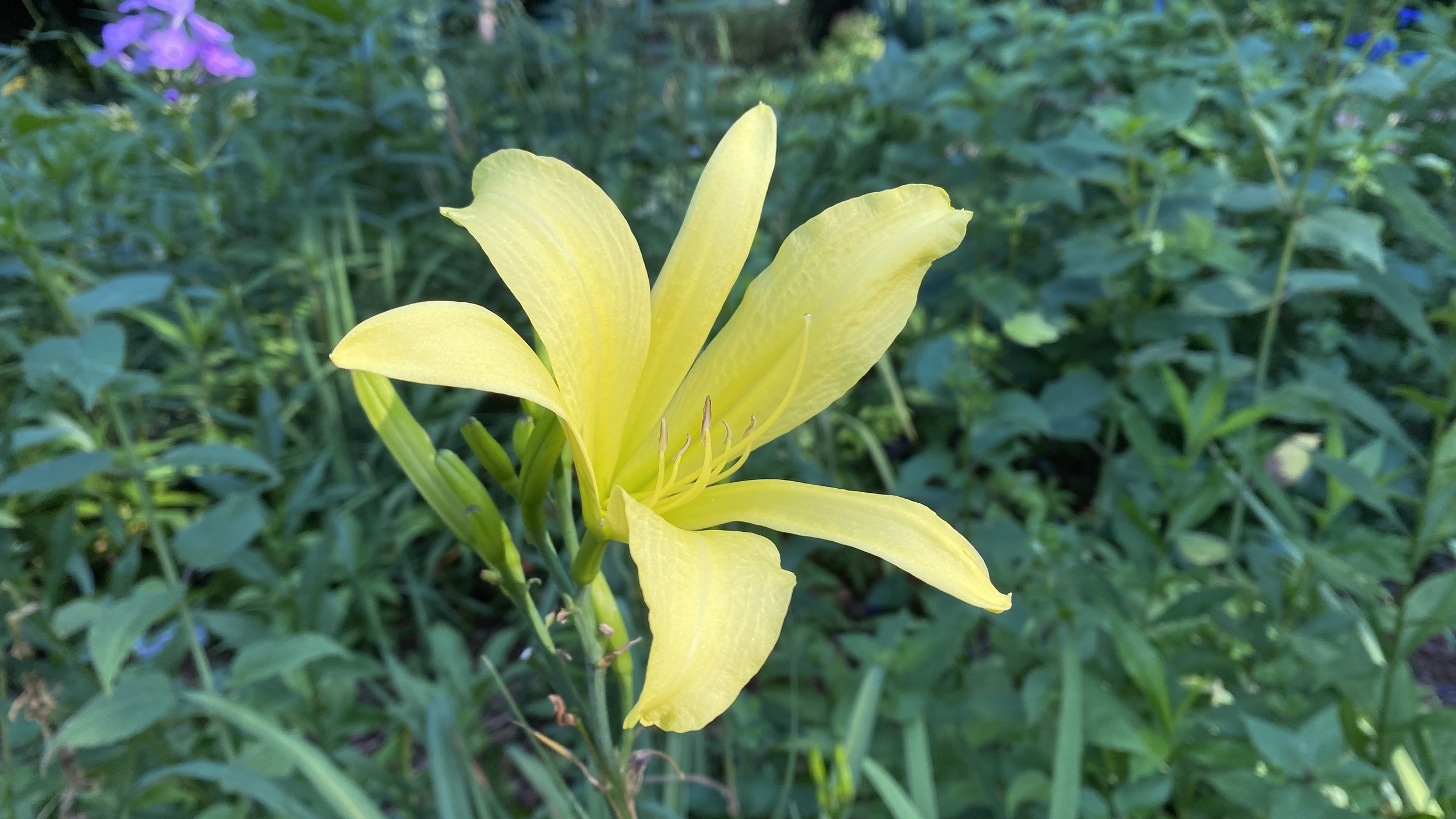
The pale luminosity of Hemerocallis ‘Patricia’ is calming in any garden scheme.
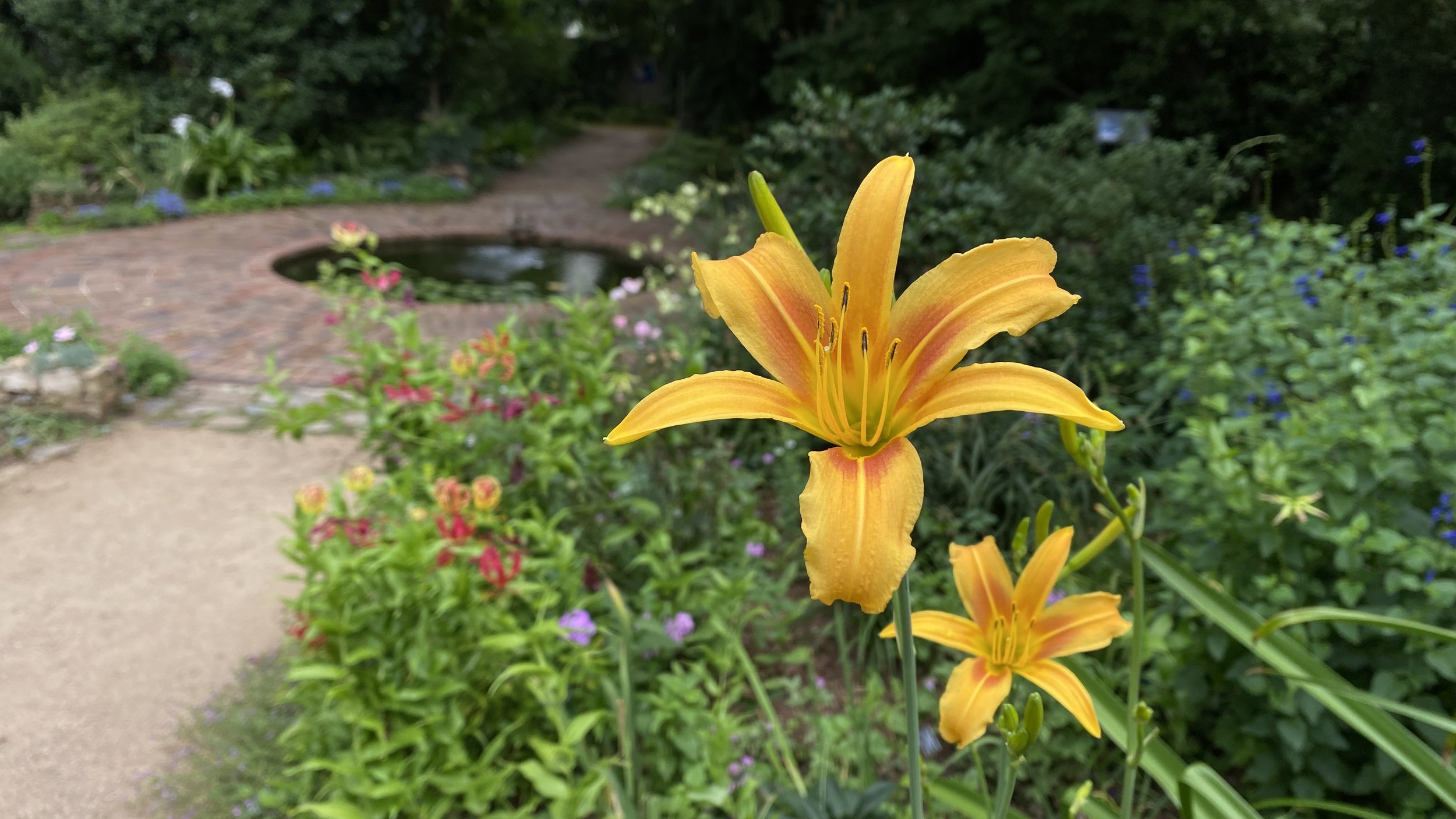
The tallest—to 6’ or more— in this garden is Hemerocallis ‘Autumn Minaret’.
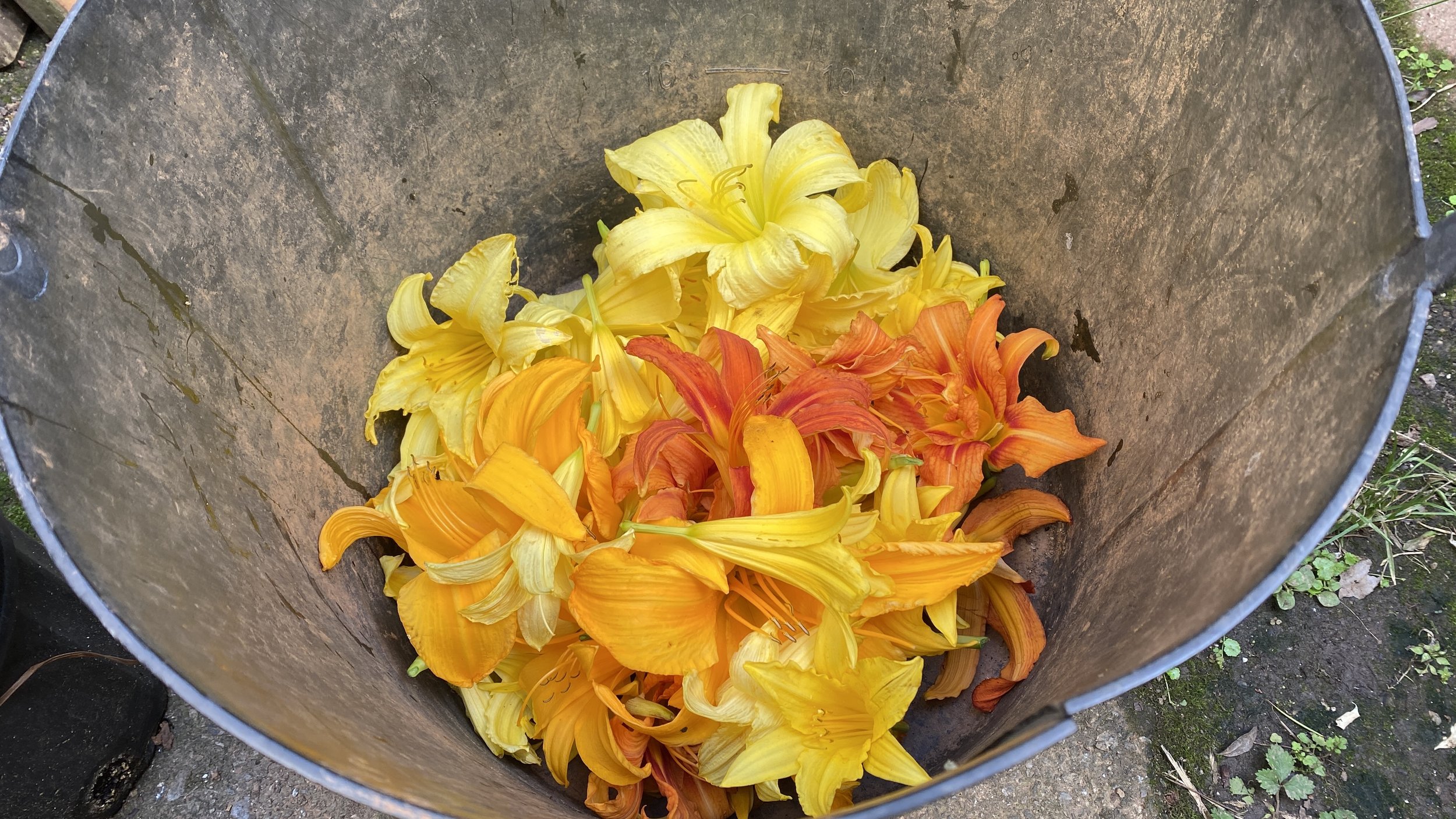
One of the tasks Elizabeth performed every day is dead-heading her daylilies; she could not stand to see old blooms left on her plants. It is something I enjoy doing first thing in the morning or last thing in the evening.
























